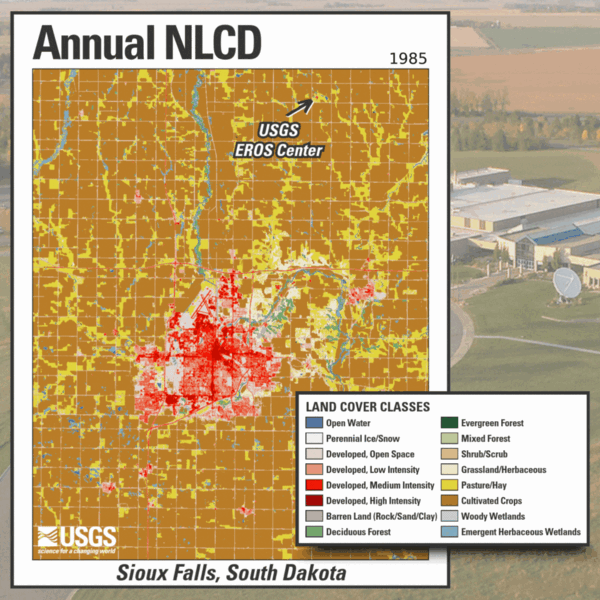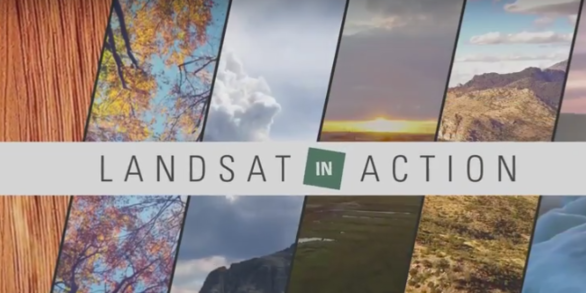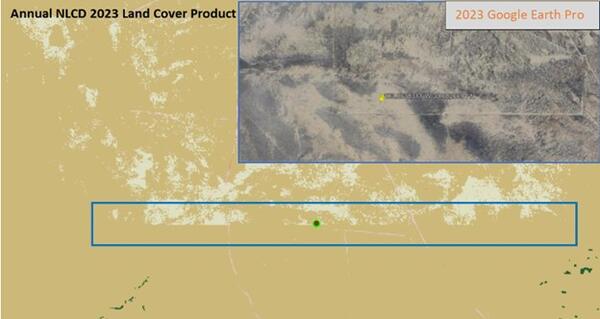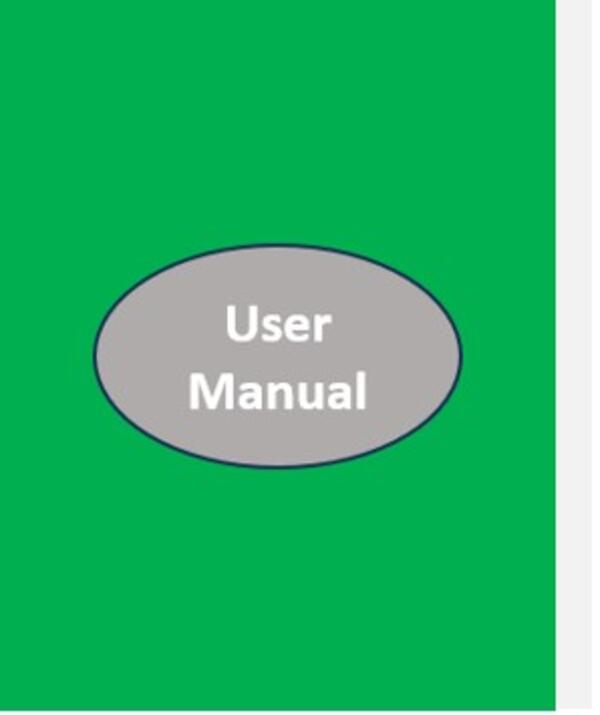Annual NLCD Animation for Sioux Falls, South Dakota, with photo of the USGS EROS Center in the background. Annual NLCD is a new generation of land cover mapping that offers annual land cover and land change science products nationwide with nearly four decades of data. Learn more here: https://usgs.gov/annualnlcd
Multimedia
See our Imagery
EROS is home to a wide variety of remotely sensed imagery. Our galleries include some of our best
Before and After
Use our interactive image comparison sliders to see change over time
Earthshots
See images and read stories about some of the world's most fascinating Earth surface change
We maintain collections of images and videos that are available for download at no charge. Follow the links below to explore our multimedia.
Images

Annual NLCD Animation for Sioux Falls, South Dakota, with photo of the USGS EROS Center in the background. Annual NLCD is a new generation of land cover mapping that offers annual land cover and land change science products nationwide with nearly four decades of data. Learn more here: https://usgs.gov/annualnlcd
Lake Superior water body showing pixelated land cover layers over the water that should just be water.
Lake Superior water body showing pixelated land cover layers over the water that should just be water.
Desert in the Southwest showing “blockiness” between shrubland and grassland in Annual NLCD land cover.
Desert in the Southwest showing “blockiness” between shrubland and grassland in Annual NLCD land cover.

Annual NLCD Animation for Sioux Falls, South Dakota. Annual NLCD is a new generation of land cover mapping that offers annual land cover and land change science products nationwide with nearly four decades of data. Learn more here: https://usgs.gov/annualnlcd
Annual NLCD Animation for Sioux Falls, South Dakota. Annual NLCD is a new generation of land cover mapping that offers annual land cover and land change science products nationwide with nearly four decades of data. Learn more here: https://usgs.gov/annualnlcd
A graphic to be used as a general illustration of user manual to be used as in the background.
A graphic to be used as a general illustration of user manual to be used as in the background.
A simple "Newsletter" logo that can be utilized for social media links. Created for the Annual NLCD website.
A simple "Newsletter" logo that can be utilized for social media links. Created for the Annual NLCD website.
Videos
The Klamath River, flowing from the high desert interior of Oregon and through the redwood forests of California, once produced large runs of salmon and trout. However, the construction of hydroelectric dams, beginning in 1918, blocked fish migration, encroached on Indigenous culture, and impacted water quality.
The Klamath River, flowing from the high desert interior of Oregon and through the redwood forests of California, once produced large runs of salmon and trout. However, the construction of hydroelectric dams, beginning in 1918, blocked fish migration, encroached on Indigenous culture, and impacted water quality.
The United States Geological Survey (USGS) Earth Resources Observation and Science (EROS) Center maintains one of the largest civilian collection of images of the Earth’s land surface. At EROS, we study land change and produce land change data products used by researchers, resource managers, and policymakers across the nation and around the world.
The United States Geological Survey (USGS) Earth Resources Observation and Science (EROS) Center maintains one of the largest civilian collection of images of the Earth’s land surface. At EROS, we study land change and produce land change data products used by researchers, resource managers, and policymakers across the nation and around the world.
 Landsat Captures Mexico's Trending Drought (Image of the Week)
Landsat Captures Mexico's Trending Drought (Image of the Week)
Prolonged drought has lowered water levels in Laguna Bustillos in Chihuahua State, Mexico, killing thousands of fish.
Prolonged drought has lowered water levels in Laguna Bustillos in Chihuahua State, Mexico, killing thousands of fish.
Rangeland managers need information on the current vegetation condition and how the landscape has changed through time.
Rangeland managers need information on the current vegetation condition and how the landscape has changed through time.
The Smokehouse Creek Fire started about 1 mile north of Stinnett, Texas on February 26th, 2024. Three days later, the fire had consumed over 1 million acres. With a total area of 1,654 square miles, it became the largest fire on record in Texas. That's larger than New York's Long Island.
The Smokehouse Creek Fire started about 1 mile north of Stinnett, Texas on February 26th, 2024. Three days later, the fire had consumed over 1 million acres. With a total area of 1,654 square miles, it became the largest fire on record in Texas. That's larger than New York's Long Island.
 EMIT: Imaging Spectroscopy, Surface Mineralogy, and Greenhouse Gas Products and Resources Available from the LP DAAC
EMIT: Imaging Spectroscopy, Surface Mineralogy, and Greenhouse Gas Products and Resources Available from the LP DAAC
EMIT: Imaging Spectroscopy, Surface Mineralogy, and Greenhouse Gas Products and Resources Available from the LP DAAC
linkThis is a recording of a previous webinar entitled: “EMIT: Imaging Spectroscopy, Surface Mineralogy, and Greenhouse Gas Products and Resources Available from the LP DAAC”. This webinar was recorded on May 30, 2024.
EMIT: Imaging Spectroscopy, Surface Mineralogy, and Greenhouse Gas Products and Resources Available from the LP DAAC
linkThis is a recording of a previous webinar entitled: “EMIT: Imaging Spectroscopy, Surface Mineralogy, and Greenhouse Gas Products and Resources Available from the LP DAAC”. This webinar was recorded on May 30, 2024.
Audio
In this episode of Eyes on Earth, we talk about the latest release of the National Land Cover Database (NLCD). More than just a map, NLCD is a stack of maps—a database. It has long been the foundational land cover source for scientists, resource managers, and decision-makers across the United States, and now the next generation of USGS land cover mapping is here.
In this episode of Eyes on Earth, we talk about the latest release of the National Land Cover Database (NLCD). More than just a map, NLCD is a stack of maps—a database. It has long been the foundational land cover source for scientists, resource managers, and decision-makers across the United States, and now the next generation of USGS land cover mapping is here.


In this episode of Eyes on Earth, we talk about the Landscape Fire and Resource Management Planning Tools (LANDFIRE) project, which is commemorating its 20th year of providing geospatial data to support natural resource management and wildland fire planning. LANDFIRE brings a lot of data together, over 30 data products, into one place.
In this episode of Eyes on Earth, we talk about the Landscape Fire and Resource Management Planning Tools (LANDFIRE) project, which is commemorating its 20th year of providing geospatial data to support natural resource management and wildland fire planning. LANDFIRE brings a lot of data together, over 30 data products, into one place.


In this episode of Eyes on Earth, we talk to forest ecologist Jim Lutz about the effort to map fires in Utah. Fire research in the West is dominated by the study of large fires, but the forests in Utah are different. Utah typically does not have a lot of large fires as other western states do.
In this episode of Eyes on Earth, we talk to forest ecologist Jim Lutz about the effort to map fires in Utah. Fire research in the West is dominated by the study of large fires, but the forests in Utah are different. Utah typically does not have a lot of large fires as other western states do.


This Eyes on Earth episode is the third in our series on using Landsat for coastal studies. We talk to physical geographer Jeff Danielson about bathymetry and how it is critical for coastal modeling. Bathymetry captures the shape of underwater topography, and satellite-derived bathymetry helps fill in areas where there are data gaps.
This Eyes on Earth episode is the third in our series on using Landsat for coastal studies. We talk to physical geographer Jeff Danielson about bathymetry and how it is critical for coastal modeling. Bathymetry captures the shape of underwater topography, and satellite-derived bathymetry helps fill in areas where there are data gaps.


In this episode of Eyes on Earth, we talked with some of the interns who worked at EROS this summer. They shared their experiences learning about the cloud, AI, wildland fire research, terrestrial lidar scanning, and more. The common theme among them was recognizing the value of the EROS mission and noticing the passion their co-workers demonstrated in their work.
In this episode of Eyes on Earth, we talked with some of the interns who worked at EROS this summer. They shared their experiences learning about the cloud, AI, wildland fire research, terrestrial lidar scanning, and more. The common theme among them was recognizing the value of the EROS mission and noticing the passion their co-workers demonstrated in their work.


This episode of Eyes on Earth is the second in a series about how Landsat is helping researchers study coastal changes. The first one was about mapping changes to beaches in California and using Landsat to create models to predict how the coastline may change in the future because of sea level rise and coastal erosion.
This episode of Eyes on Earth is the second in a series about how Landsat is helping researchers study coastal changes. The first one was about mapping changes to beaches in California and using Landsat to create models to predict how the coastline may change in the future because of sea level rise and coastal erosion.












